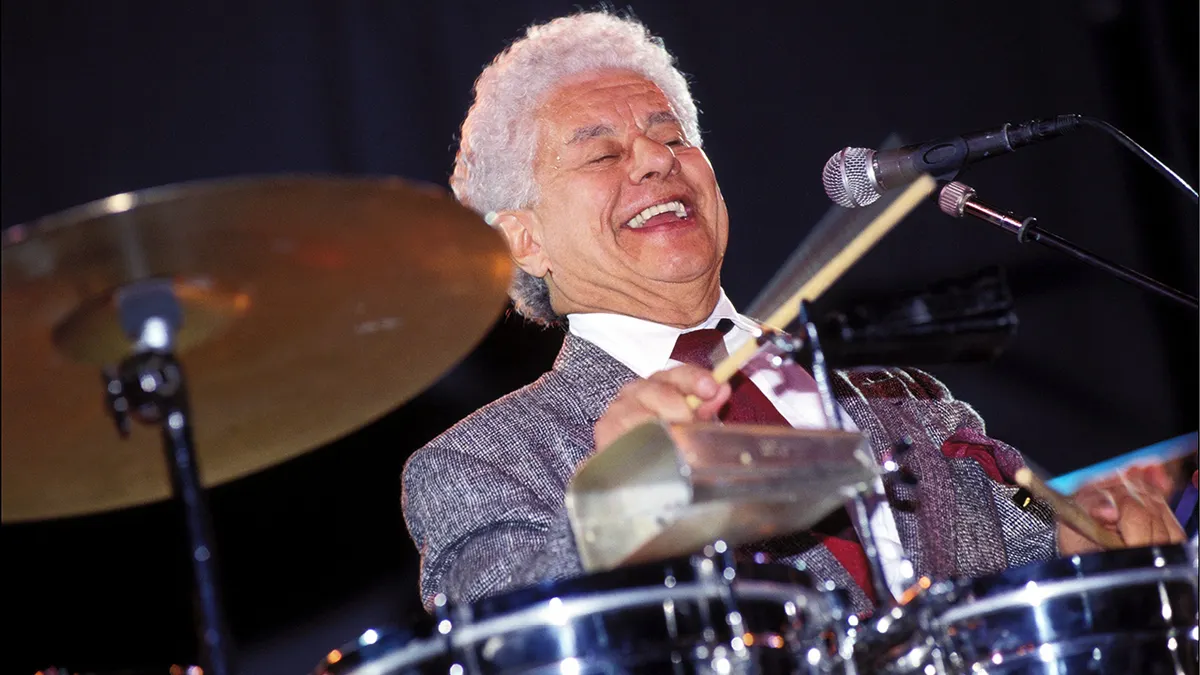Overview as a Music Artist and His Impact
Tito Puente (1923–2000), often referred to as “El Rey” (The King), was an American musician, songwriter, bandleader, and record producer of Puerto Rican descent. Renowned for his virtuosity on the timbales and his contributions to Latin music, Puente was a pivotal figure in the development of Afro-Cuban jazz, mambo, and salsa. His dynamic performances, innovative compositions, and charismatic leadership helped bring Latin music to mainstream audiences around the world.
Early Life and Musical Beginnings
Ernesto Antonio “Tito” Puente was born on April 20, 1923, in Spanish Harlem, New York City. Raised in a vibrant Puerto Rican community, he was exposed to a wide range of musical styles from a young age, including jazz, big band, and Afro-Cuban rhythms. Puente began his musical training as a drummer and later expanded his repertoire to include piano, saxophone, vibraphone, and most notably, the timbales.
Puente’s formal musical education included studies at the Juilliard School, where he honed his skills in composition, orchestration, and conducting. This education laid the foundation for his later success as a bandleader and composer.
Musical Innovations and Style
Tito Puente’s music was a vibrant fusion of Afro-Cuban rhythms, jazz, and big band influences. He was instrumental in popularizing the mambo and cha-cha-cha in the United States during the 1950s, and he continued to innovate throughout his career by incorporating elements of salsa, Latin jazz, and other genres.
- Master of the Timbales: Puente was known for his extraordinary skill on the timbales, a pair of single-headed drums that became a central feature of his performances. His energetic playing style, characterized by rapid-fire solos and rhythmic complexity, helped elevate the timbales from a background percussion instrument to a lead instrument in Latin music.
- Mambo and Cha-Cha-Cha: In the 1950s, Puente was at the forefront of the mambo craze, a dance and music style that swept across the United States. His recordings, such as “Ran Kan Kan” and “Mambo Gozón,” were instrumental in popularizing the mambo beyond its Cuban roots. Puente also played a key role in the development of the cha-cha-cha, another dance style that became hugely popular during this time.
- Afro-Cuban Jazz Pioneer: Puente’s fusion of jazz with Afro-Cuban rhythms was groundbreaking, contributing to the development of Afro-Cuban jazz, also known as Latin jazz. His compositions often featured complex arrangements, blending traditional Latin rhythms with jazz harmonies and improvisation. Albums like Dance Mania (1958) are considered classics of the genre.
Career Highlights
- Prolific Recording Artist: Over his career, Tito Puente recorded more than 100 albums and composed over 400 songs. His extensive discography includes influential albums such as Dance Mania (1958), Top Percussion (1957), and El Rey Bravo (1963). His work spanned various styles, from mambo and cha-cha-cha to salsa and Latin jazz.
- Collaborations and Influence: Puente collaborated with numerous legendary artists, including Celia Cruz, Santana, Dizzy Gillespie, and Machito. His influence extended beyond Latin music, as he worked with jazz and rock musicians, contributing to the broader acceptance of Latin sounds in popular music.
- Television and Film: Puente’s charisma and showmanship made him a popular figure on television and in film. He appeared on shows like “The Cosby Show” and in films such as “The Mambo Kings” (1992), where he played himself. His music was also featured in numerous films, further cementing his status as a cultural icon.
Impact and Legacy
Tito Puente’s impact on music is immeasurable. He played a crucial role in bringing Latin music to mainstream audiences in the United States and around the world. His contributions to the development of Afro-Cuban jazz, mambo, and salsa have left a lasting legacy that continues to influence musicians across genres.
- Global Ambassador of Latin Music: Puente’s ability to bridge cultural and musical divides made him a global ambassador of Latin music. He brought Afro-Cuban rhythms to mainstream audiences and inspired countless musicians to explore and incorporate Latin elements into their music.
- Awards and Honors: Puente received numerous accolades throughout his career, including five Grammy Awards, the National Medal of Arts, and an induction into the International Latin Music Hall of Fame. He was also awarded a star on the Hollywood Walk of Fame, recognizing his contributions to entertainment.
- Cultural Icon: Beyond his musical achievements, Tito Puente became a symbol of Latino pride and cultural identity. His music continues to be celebrated and performed around the world, and his influence can be heard in the work of contemporary Latin artists as well as in genres like jazz, rock, and pop.
Modern Influence and Continued Relevance
Tito Puente’s music remains a vital part of the Latin music tradition. His recordings are still widely listened to, and his compositions are frequently performed by Latin bands and orchestras. His influence is particularly evident in the work of salsa and Latin jazz musicians, who continue to draw inspiration from his innovative approach to rhythm, melody, and arrangement.
References
- AllMusic – Tito Puente Biography: Provides an in-depth overview of Tito Puente’s career, musical style, and contributions to Latin music.
- National Endowment for the Arts – Tito Puente: National Medal of Arts: Discusses Puente’s achievements and his recognition with the National Medal of Arts.
- PBS – Tito Puente: The King of Latin Music: Explores Puente’s life, music, and impact on American and Latin culture.
- The New York Times – Tito Puente, Latin Jazz Musician, Dies at 77: Obituary highlighting Puente’s legacy and contributions to music.


Leave a Reply